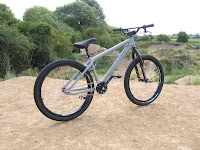In
1975 the hubless wheel design was replaced with steel hubs and a wheel lined
with a tough fabric on the inside. More durable plastic fenders were added.
This time they produced fenders in bright colors for better visibility out in
the bush. As the ATV’s popularity grew the Japanese engineers didn’t stop their
research and development. They had a good thing going and they were determined
to make it better. Their engineers went into the field to see how the ATV’s
performed and started gathering data to help with the next round of
modifications.
By
the 1980’s, ATVs had gone the same route as dirt bikes and motorcycles. The
ATV’s were being used as a utility vehicle and for racing. More and more people
were buying ATV’s for riding off road trails and competing in races similar to
motocross events. By 1985 ATV usage had gone from only 30% in the 70’s to the
whopping 80%. In the 1988, Honda made another groundbreaking leap with the
ATV’s design, the introduced the FourTrax 300 and a second model called the
FourTrax 300 4x4. Up until this point
the ATV still had the three wheels, now Honda added an extra wheel and gave the
ATV four wheel drives, which provided more stability and power. They also
fitted the FourTrax with a four stroke single cylinder engine which was air
cooled and gave it a five speed transmission, automatic clutch and a
maintenance free drive shaft. Honda also thought to give the FourTrax an extra
low gear for hauling particularly heavy objects as big as 850 lbs.
Today,
ATV’s are fully ingrained into our way of living. You can find ATVs on the dirt
bike trails, on farms, on construction sites and a host of other places. Now
countries all over the world are discovering the same thing Americans have; the
ATV is a fun and efficient vehicle for handling a wide array of jobs in almost
any environment.
The end.



